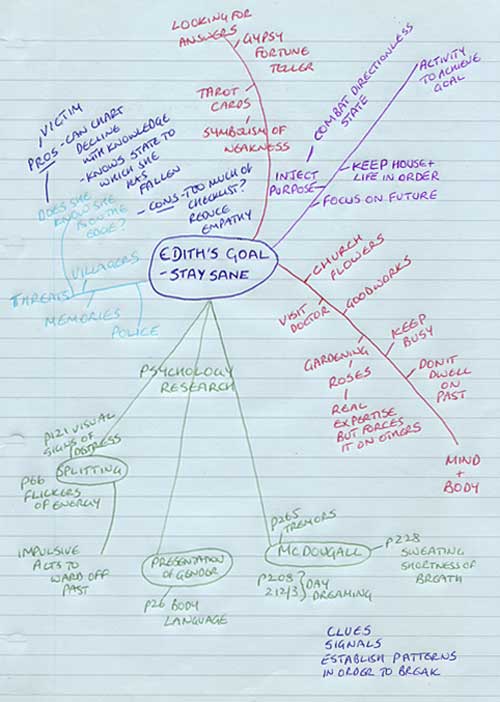Fletchling Village September 1926
. . . no one can directly observe what is passing in the mind of another. He can only interpret external signs on the analogy of his own experience. These external signs always consist in some kind of bodily action or attitude.
I use mind-maps a lot. They are a good way of both organising thoughts and sparking the subconscious. I find I can organise how I am going to drop my research into the narrative at the same time as reminding myself of plot progression. There is, of course, the added bonus that I love using coloured pencils/pens on coloured paper.
This mind-map is one I reconstructed from working notes – the original was littered with too many spoilers.
Here are some other notes of notes:
- Edith defines herself by conflict with others.
She uses cognitive dissonance a lot, changing her opinion to one which maintains a positive self image.
Highly educated in science. Don’t have her deliberately sand-offish. - The doppelganger always reflects strong inner conflict. The reach towards integration and perils of disintegration.
As with Hitchcock’s Strangers on a Train, use pairs / doubles, circles / broken circles to show duality of nature.
Explore more of my mind-maps:



